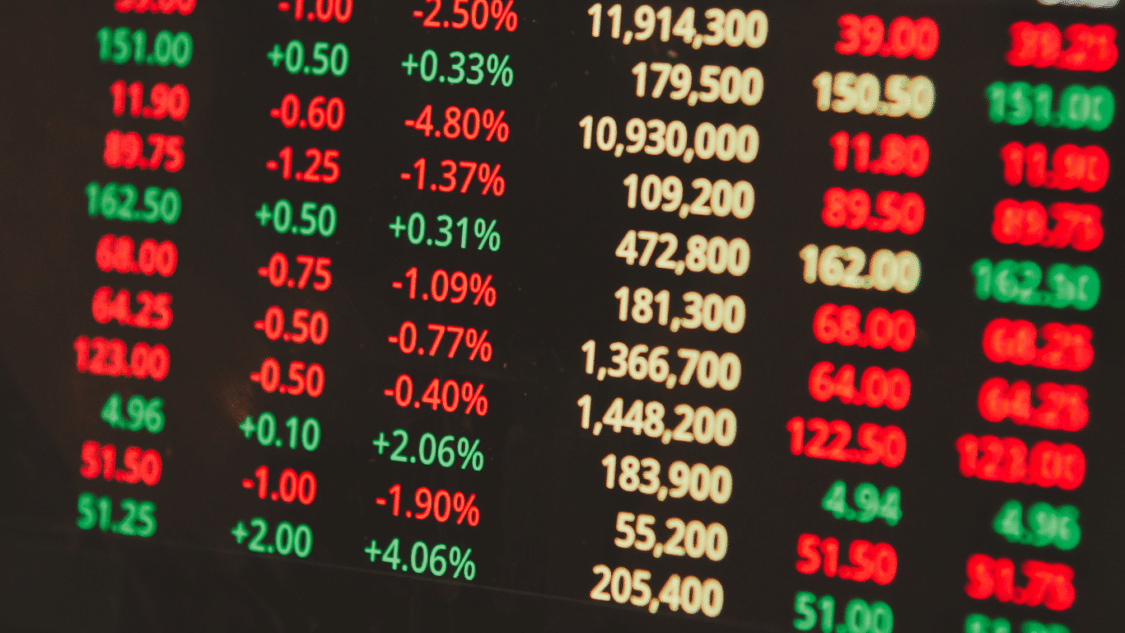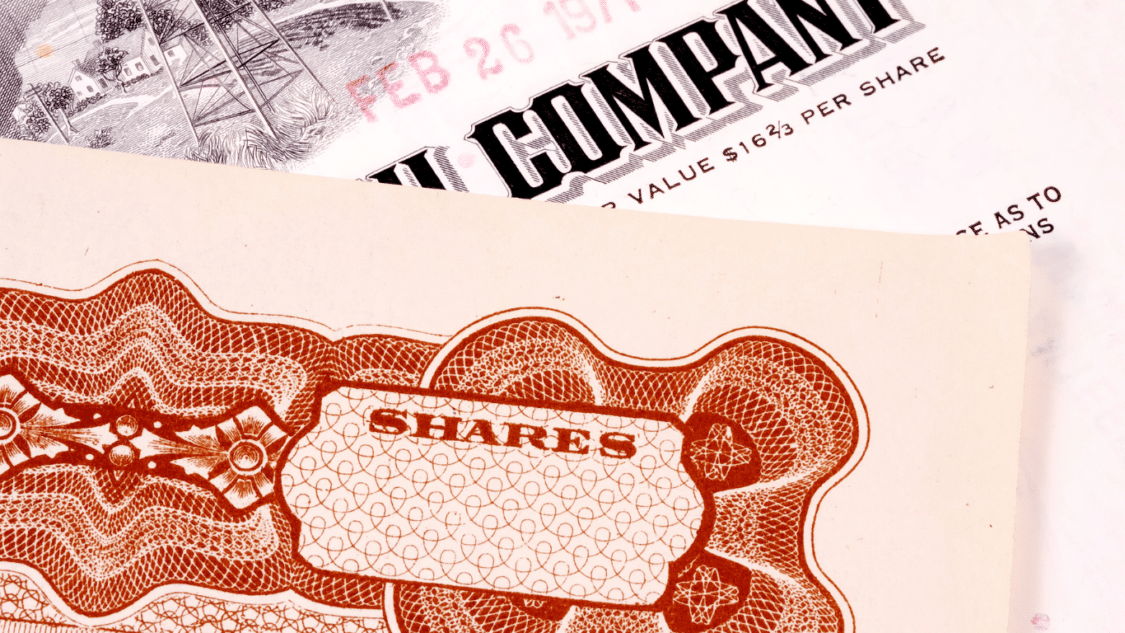- What is a Stock?
- What is a Share?
- How do they differ?
- The Factors That Influence Their Price
- Investment Strategies
- Investing in Shares in Australia
- Assessing Financial Health for Informed Investing
- Can Individuals Buy Stocks/Shares Directly From a Company?
- Key Metrics to Evaluating Stocks/Shares
- Can Stocks/Shares Be Traded Internationally?
- Closing Thoughts
The terms stocks and shares are frequently used interchangeably because they relate to the same subject but have different meanings. We’ll discuss the definitions of the two terms, their differences and much more.

Let’s dive Deeper Into The Definitions of Stocks and Shares:
What is a Stock?
In simple terms, a stock represents ownership in a company. When buying a stock, you purchase a small piece of that company, making you a shareholder. Stocks are typically issued by corporations to raise capital and fuel growth. As a shareholder, you have certain rights, such as voting on corporate matters and receiving a portion of the company’s profits in the form of dividends.
Stocks are traded on stock exchanges, where investors buy and sell them based on their perceived value. They are influenced by various factors, including company performance, economic conditions, and investor sentiment. Stocks come in different types, such as common and preferred, each with its unique features. Understanding stocks is essential for anyone looking to navigate the investing world and potentially build wealth over time. Below we will talk about 5 types of stocks:
Types of Stocks

Common Stocks: These stocks represent ownership in a company and typically come with voting rights, allowing shareholders to have a say in company decisions. Common stockholders may also receive dividends, although these payments are not guaranteed.
Preferred Stocks: Preferred stock provides shareholders with preferential treatment when it comes to dividends and liquidation. Preferred stockholders receive fixed dividends before common stockholders and have a higher claim on assets in the event of liquidation.
Growth Stocks: Growth stocks belong to companies with high growth potential but usually don’t pay dividends. Investors often purchase growth stocks with the expectation of capital appreciation over time.
Income Stocks: Income stocks are known for providing consistent dividends. These stocks are often associated with stable and mature companies that generate regular cash flow.
Value Stocks: Value stocks are considered undervalued by the market and may present a potential opportunity for traders. Those stocks are often associated with companies with stable fundamentals but trading at a lower price than their intrinsic value.
Pros & Cons
Pros:
- Potential for Growth: Stocks offer the potential for significant capital appreciation, allowing investors to benefit from the growth of a company over time. As companies expand and become more profitable, the value of their stocks can increase, resulting in potential returns for shareholders.
- Dividend Income: Some stocks provide regular dividend payments to shareholders. These dividends can be a source of passive income and can be reinvested to compound wealth or used to fund living expenses.
- Diversification: Investing in stocks enables individuals to diversify their portfolios. By trading various stocks across different industries and sectors, investors can spread their risk and potentially mitigate losses if one particular stock underperforms.
Cons:
- Volatility and Risk: Stocks are subject to market fluctuations and can be volatile. Share prices can experience significant ups and downs in response to economic, political, or company-specific factors. Investing in stocks involves a degree of risk, and there is always the option of losing a portion or all of the invested capital.
- Lack of Control: As a shareholder, you have limited control over the day-to-day operations and decision-making of the company. Management decisions, corporate governance, and external factors can influence the performance of the stock, which may not always align with individual investor preferences.
What is a Share?
A share represents a portion of the company’s overall capital divided into equal units. Each share entitles its owner, known as a shareholder, to specific rights and privileges within the company. These rights can include voting on company matters, receiving dividends, and participating in the company’s profits. A corporation typically issues shares to raise funds for business operations or expansion.
Traders can buy and sell shares on stock exchanges, where prices fluctuate based on market demand and supply. It’s important to note that while “stock” is a broader term encompassing all ownership units, a “share” refers to a specific unit of ownership in a company. Understanding the concept of shares is crucial for investors, as it forms the basis of their ownership and participation in the growth and success of a company.
Public Shares: These types of shares are always on the stock market. Investors can enter the stock market and buy or sell public shares quickly.
Private Shares: Unlike public shares, those shares are not traded on public exchanges. These shares are typically held by a limited number of individuals, such as company founders, early investors, or venture capitalists. Private shares offer less liquidity but may provide potential opportunities for significant returns if the company experiences substantial growth.
NOTE: Private companies can sometimes become public companies. When this occurs, the company’s shares transition from private to public.
Types of Shares

Ordinary Shares – This share is very similar to common stocks.
Cumulative Preferred Shares – These shares are a type of preferred stock that guarantees shareholders the right to receive unpaid dividends in the future, even if the company temporarily suspends dividend payments. These shares provide security to investors, ensuring they will eventually receive their entitled dividends.
Deferred Shares – In the case of bankruptcy, these shares have no rights to assets until preferred and common stockholders have been given their money.
Non–voting Shares – As the name suggests, those shares do not come with voting rights. While shareholders of non-voting shares may not have a direct say in the company’s decision-making process, they still have the potential to benefit from dividends and capital appreciation.
Preference Shares – These shares stand in the same line as preferred stocks.
Redeemable Shares: The company repurchases this type of share after a specific date or event.
Redeemable Preference Shares – Those types of shares are like preferred stocks with the addition of a call option. Redeemable Preference Shares allow companies to repurchase these shares from shareholders at a predetermined price or time. This feature provides flexibility to companies, allowing them to manage their capital structure and potentially adjust ownership percentages over time.
Pros & Cons
Pros:
- Ownership and Voting Rights: Owning shares provides individuals with ownership in a company and the right to vote on important matters. Shareholders can influence the company’s direction by participating in shareholder meetings and voting on key decisions.
- Dividend Entitlement: Depending on the type of share, shareholders may be entitled to receive dividends. This can be a source of stable income or a potential return on investment.
- Potential for Preferential Treatment: Preferred shares offer certain advantages, such as preferential treatment in dividend payments and liquidation. These shares can provide a level of stability and consistent income for investors.
Cons:
- Limited Control and Influence: While owning shares grants ownership rights and voting privileges, individual shareholders may have limited control over the overall decision-making process within the company. Decisions are typically made collectively by a board of directors or majority shareholders.
- Lack of Liquidity: Shares, especially those of private companies, may lack liquidity. Selling shares and converting them into cash may not always be easy or possible, making it more challenging to access invested capital.
The reason why investors buy shares is to make a profit from them eventually. There are two ways to make returns from shares, either through capital gains or income. The profit from capital gains is through selling a share whose value has increased. In most cases, this occurs when the company is successful and is making a steady income. An additional way is to generate an income from owning shares. Some companies also pay dividends to shareholders or investors who own stock in the company.
How do they differ?
A wise investment in stocks requires careful consideration of the company’s financial performance, the prevailing trends in the industry, and the general market conditions. When it comes to investment, there are notable distinctions to be made between both.
The distinction between stocks and shares can delineate the ownership structure of a company. Stocks signify collective ownership in the company, whereas shares represent individual portions of ownership. Investors purchase a fraction of the company’s ownership in the stock market, and their investment’s worth hinges on the company’s overall performance. Investors who buy shares are essentially acquiring a set quantity of ownership units, and the worth of their investment rests on the current market value of the shares.
Investing money in stocks and shares comes with various risks and the possibility of earning a return on investment. In general, stocks are perceived to be unsafe investment options since they tend to be more unpredictable and influenced by variations in the market. Alternatively, there exists an opportunity to achieve more significant long-term financial gains. On the contrary, shares present a relatively secure investment alternative since they represent a substantial portion of ownership in a company and are not impacted by the same market fluctuations as stocks.
The dividend policies can vary. Investors who hold stocks may receive dividends as a form of profit distribution from the company. The distribution of dividends may not be assured and could be impacted by various factors, such as the financial state of the organisation and the prevailing market circumstances. Shares may not provide dividends, as they merely represent a proportion of ownership in a business and do not guarantee any form of compensation.
Although stocks and shares are frequently used synonymously, they carry distinct definitions and operate differently within financial investments. Shares of stocks symbolise holding a stake in an enterprise and provide opportunities for increasing funds and receiving dividends. On the contrary, shares signify an organisation’s distinct ownership portions and can offer a dependable investment alternative.
To make wise investment choices and minimise risk, one must carefully evaluate aspects such as the company’s financial performance, current market conditions, and the trends in the industry while investing in stocks and equities. To invest successfully, it is crucial to be aware of the distinctions between stocks and shares and comprehend their functioning to identify the investment approach that corresponds with your objectives and risk appetite.
The Factors That Influence Their Price
Understanding the factors that affect stock prices is essential for investors who want to make informed decisions in the world of stocks and shares. Various key factors impact the dynamics of stock prices. A company’s financial performance and prospects, including revenue growth, earnings, and future projections, significantly influence its stock price. Broader economic conditions, such as GDP growth, inflation, and interest rates, can also sway stock prices. Industry and sector trends, investor sentiment, and market psychology play a profound role.
Company-specific news and events, such as product launches or management changes, may cause fluctuations. Global and geopolitical factors, such as trade disputes or political instability, introduce another layer of influence. Additionally, supply and demand dynamics, driven by investor behaviour and trading activities, further contribute to price fluctuations. Understanding these multifaceted factors empowers investors to navigate the stock market with a deeper understanding of what drives stock prices and make well-informed investment decisions.
Investment Strategies
Investors employ several common strategies to maximise their returns when trading stocks and shares. Value investing involves identifying undervalued stocks with strong fundamentals, while growth investing focuses on companies with high growth potential. Dividend investing prioritises stocks that provide regular income through dividends, while index fund investing offers broad market exposure through diversified funds.
Momentum investing seeks stocks with recent strong price performance, while contrarian investing goes against prevailing market sentiment. GARP investing combines elements of value and growth investing in finding stocks with reasonable growth potential at a fair price. By exploring and understanding these strategies, investors can align their investment approach with their goals and preferences, making informed decisions in the dynamic world of trading.
Investing in Shares in Australia
Shares in Australia present a unique opportunity for investors to engage with a diverse and thriving market. The Australian stock market encompasses various sectors, including mining, finance, healthcare, technology, and more. This diversity offers investors a wide range of options to align their investments with their preferences and goals.
At the core of the Australian stock market lies the Australian Securities Exchange (ASX), serving as the primary platform for share trading. The ASX is known for its efficiency, transparency, and adherence to strict regulatory standards. Investors can trade shares of established companies with a proven track record and emerging startups with high growth potential.
Investing in Australian shares grants access to the country’s resource-rich economy, with mining companies playing a prominent role. Furthermore, the robust financial sector, home to central banks and institutions, offers stability and regulated investment opportunities. Australia’s growing healthcare and technology industries present exciting prospects for investors, ranging from pharmaceutical companies to innovative start-ups.
Australia’s strong regulatory framework ensures companies adhere to high reporting and transparency standards, fostering investor confidence. Conducting thorough research, analyzing market trends, and seeking professional advice is crucial for making informed investment decisions tailored to individual financial objectives and risk tolerance.
Investors become partial owners of leading companies by investing in Australian shares, benefiting from potential dividends and long-term capital appreciation. This presents an avenue for diversifying investment portfolios and participating in the growth of various industries.
How to Buy Shares Online in Australia?
In today’s digital age, buying shares online in Australia has become a convenient and accessible option for investors. The process begins by selecting a reputable online brokerage platform that offers access to the Australian stock market. These platforms provide user-friendly interfaces and tools to facilitate seamless transactions. After creating an account and completing the necessary verification process, investors can fund their trading account through various methods, such as bank transfers or online payment systems. To make informed investment decisions, it is vital to research and analyzes different companies and sectors before buying shares.
Online brokerage platforms offer comprehensive resources, including real-time market data, company profiles, financial reports, and analyst research, empowering investors to make informed choices. Once the desired shares are identified, investors can place buy orders online, specifying the number of shares and the cost they are ready to pay.
It’s important to note that online trading operates on market hours, allowing investors to monitor share prices and execute trades accordingly. Once the buy order is completed, investors will become shareholders, and the shares will be credited to their online trading account. Regular monitoring of investments and staying updated with market trends are crucial for successful online share trading in Australia.
Assessing Financial Health for Informed Investing
It is crucial to assess a company’s financial health and stability before investing in its stocks or shares. Investors can employ various strategies to evaluate the company’s financial standing. This involves analysing the company’s financial statements, cash flow, income statements, and balance sheets. Key financial ratios provide insights into profitability, liquidity, and solvency.
Evaluating revenue and earnings growth over time helps gauge the company’s performance. Assessing debt levels and management, analysing cash flow patterns, and understanding the competitive landscape and industry trends are also important. Additionally, evaluating the management team’s competence, and corporate governance practices, identifying potential risks, and considering external factors such as macroeconomic conditions contribute to a comprehensive assessment. By thoroughly analysing these factors, investors can make more informed decisions regarding a company’s financial health and stability before investing in its stocks or shares.
ISA Calculator for Financial Success
A stocks and shares ISA calculator is a valuable tool that empowers investors to make informed decisions when considering investments within an Individual Savings Account (ISA). This calculator enables individuals to assess the potential growth of their investments by taking into account various factors such as the amount invested, expected returns, and the duration of investment. By inputting these details into the calculator, investors can obtain an estimate of their potential returns over time.

The ISA calculator helps investors evaluate different investment scenarios, allowing them to explore the impact of varying investment amounts or adjusting the investment duration. Additionally, the calculator may provide insights into the potential tax advantages of investing through an ISA, such as tax-free growth and tax-free withdrawals. By using the ISA calculator, investors can gain a clearer understanding of how their investments may grow and make more informed decisions about their financial goals and strategies within the context of an ISA.
Is HL Stocks and Shares ISA a Smart Investment Choice?
HL Stocks and Shares ISA allows individuals to invest in a diverse range of stocks Hargreaves Lansdown offers. Through their platform, investors can become shareholders in various companies, benefiting from potential growth and dividends. With comprehensive tools and research resources, Hargreaves Lansdown empowers investors to make informed decisions and actively manage their portfolios. Remember to consider the inherent risks involved in stock investments.
Can Individuals Buy Stocks/Shares Directly From a Company?
The answer is – Yes. individuals can buy stocks and shares directly from a company through a process known as direct stock purchase plans (DSPPs) or dividend reinvestment plans (DRIPs). DSPPs allow investors to purchase shares directly from the company without going through a broker. Large, publicly traded companies typically offer these plans as a way to encourage individual investment.
DRIPs, on the other hand, enable shareholders to reinvest their dividends back into purchasing additional shares of the company’s stock. This allows investors to gradually increase their holdings over time. Not all companies offer DSPPs or DRIPs, so it’s essential to research and confirm if a company provides these options before buying stocks directly from them.
Key Metrics to Evaluating Stocks/Shares
Investors should consider a range of key metrics and ratios when evaluating stocks and shares to make informed decisions. The price-to-earnings ratio (P/E) helps assess a stock’s valuation, while earnings per share (EPS) measures profitability. Dividend yield indicates the annual dividend payment as a percentage of the stock’s price, making it important for income-oriented investors. Return on equity (ROE) shows how effectively a company generates profits from shareholders’ equity.
The debt-to-equity ratio reflects financial leverage and potential risk. Free cash flow (FCF) reveals available cash for growth and debt repayment. Price-to-sales ratio (P/S) helps assess valuation relative to revenue. Return on investment (ROI) measures overall profitability. Market capitalisation indicates a company’s size and value. Lastly, beta measures stock volatility compared to the broader market. These metrics provide valuable insights into the financial health, valuation, profitability, and risk associated with them, assisting investors in making informed investment decisions.
Can Stocks/Shares Be Traded Internationally?
Investors have the opportunity to trade stocks and shares internationally, allowing them to access a wide range of companies and markets across the globe. With the interconnectedness of global financial markets, individuals can buy and sell stocks of companies listed on various international exchanges.
This international trading is facilitated through brokerage firms and online platforms, allowing investors to engage in transactions involving stocks from different countries. With that said, it’s crucial to be aware of regulations, consider currency exchange factors, and understand potential tax implications associated with international stock trading. Before venturing into this realm, seeking advice from a financial professional or conducting thorough research is advisable.
Closing Thoughts
Overall, the decision to invest in stocks or shares is determined by your specific investment approach, capacity to handle risk, and financial objectives. It is crucial to thoroughly consider and evaluate potential investments before committing to them. It is critical to engage in extensive research and analysis and seek a financial expert’s guidance if necessary. By comprehending the disparities between stocks and shares and their operational principles related to investment, you can ensure wise investment choices and optimise your investment gains in the future.
For more news updates, visit our homepage now and see our latest news article. Want to learn more about trading? Visit our education page now and learn for FREE!
Pros and Cons of Investing in Stocks(Opens in a new browser tab)
Best Ethereum Wallets(Opens in a new browser tab)
Different Types of Stocks to Invest In(Opens in a new browser tab)

